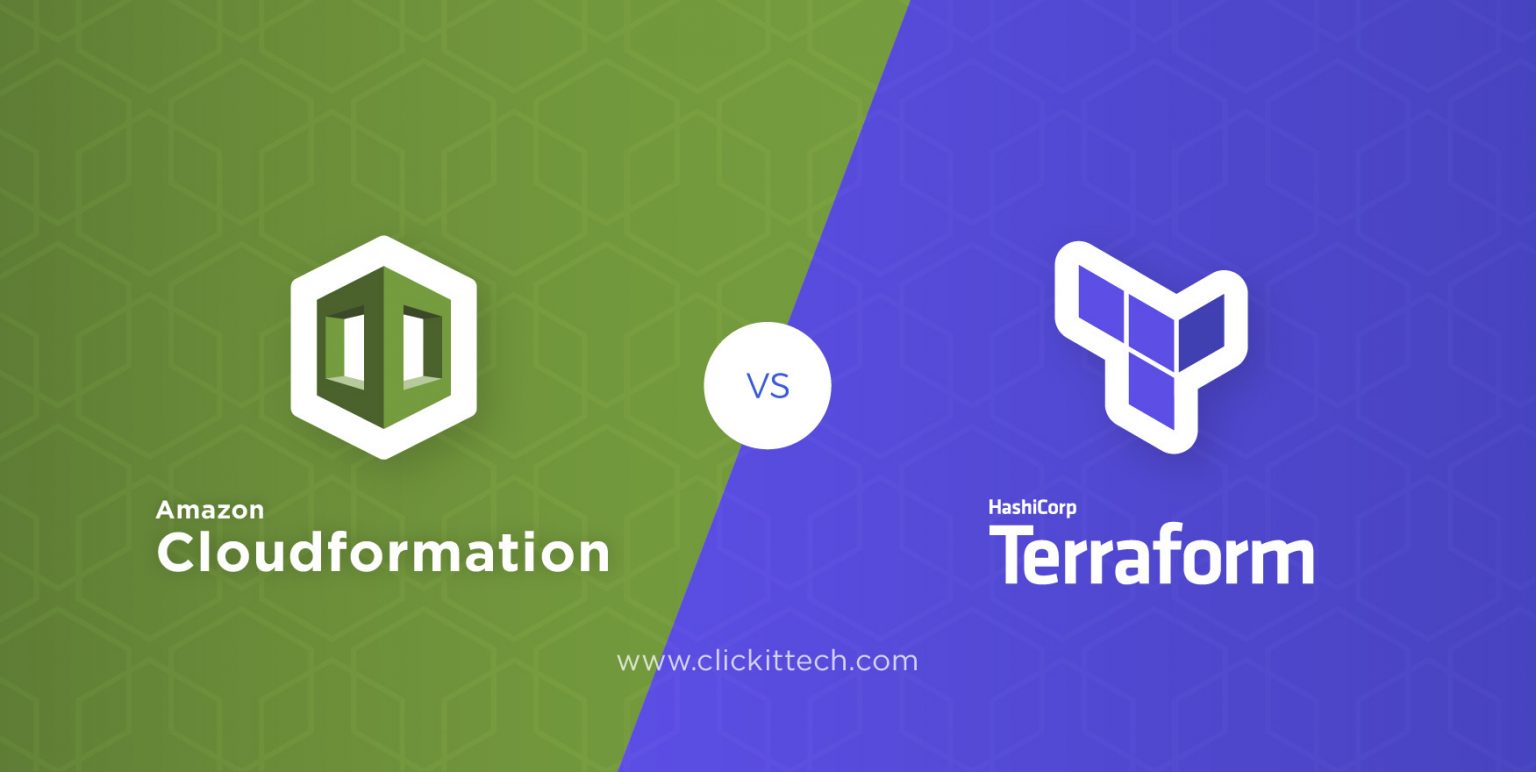Introduction
In the realm of cloud infrastructure management, the choice of an IaC tool plays a pivotal role in ensuring efficiency, scalability, and ease of deployment. Two heavyweights in this arena are Terraform and CloudFormation. In this comprehensive comparison, we’ll delve into the details of these tools, highlighting their strengths, weaknesses, and use cases, to help you make an informed decision for your cloud infrastructure needs.
IaC Tools Comparison: Terraform vs. CloudFormation
Terraform: Infrastructure as Code at its Finest
Terraform, developed by HashiCorp, is a versatile and robust IaC tool that empowers developers to define and provision infrastructure as code. It employs a declarative syntax that allows you to describe your desired infrastructure state. Terraform’s standout feature is its support for multiple cloud providers, enabling you to manage resources across platforms seamlessly. Whether you’re working with AWS, Azure, or Google Cloud, Terraform has you covered.
CloudFormation: Amazon’s Native IaC Solution
CloudFormation, Amazon Web Services’ (AWS) native IaC tool, offers a domain-specific language for defining cloud resources. This tool streamlines the provisioning and management of AWS infrastructure. One of CloudFormation’s distinct advantages is its deep integration with AWS services. It provides a wide array of predefined templates to expedite resource creation, making it an attractive choice for those heavily invested in the AWS ecosystem.
Key Features Comparison
When evaluating IaC tools, certain features stand out, influencing the decision-making process.
| Feature | Terraform | CloudFormation |
|---|---|---|
| Multi-Cloud Support | ✔️ Supports multiple cloud providers | ❌ Limited to the AWS ecosystem |
| Declarative Syntax | ✔️ Defines desired state explicitly | ✔️ Leverages JSON or YAML templates |
| Community Modules | ✔️ Extensive collection of user-contributed modules | ❌ Limited to AWS resources |
| Resource Updates | ✔️ Supports in-place updates | ✔️ Requires resource replacement for updates |
| Dependencies Management | ✔️ Handles complex inter-resource dependencies | ❌ Limited dependency management capabilities |
Use Cases: Where Each Tool Shines
Choosing between Terraform and CloudFormation largely depends on your project requirements and cloud provider preferences.
Terraform Use Cases
- Multi-Cloud Deployments: Terraform’s ability to manage diverse cloud environments makes it perfect for projects spread across multiple providers.
- Hybrid Cloud Setups: When your infrastructure spans both on-premises and cloud resources, Terraform’s adaptability shines.
- Custom Modules: Terraform’s rich module ecosystem allows you to craft custom solutions for unique infrastructural needs.
CloudFormation Use Cases
- AWS-Centric Workloads: If your infrastructure is primarily on AWS, CloudFormation’s tight integration and AWS-specific features offer streamlined management.
- Quick Prototyping: CloudFormation’s pre-built templates enable rapid resource creation and facilitate testing of different architectures.
- Resource Standardization: For teams seeking standardized AWS resource deployment, CloudFormation’s templates ensure consistency.
Pros and Cons: Weighing the Trade-offs
Terraform Pros
- Multi-Cloud Flexibility: Terraform’s cross-platform support minimizes vendor lock-in.
- Infrastructure as Code Purity: Declarative syntax leads to precise representation of desired state.
- Large Community: A vibrant community contributes modules, ensuring quicker development.
Terraform Cons
- Steeper Learning Curve: The robustness of Terraform requires time to master.
- Resource Complexity: Managing intricate resource dependencies can be challenging.
CloudFormation Pros
- AWS Integration: Seamless integration with AWS services and resources.
- Easy Entry: Simplicity of predefined templates allows for rapid deployment.
- Managed Service: CloudFormation is fully managed by AWS.
CloudFormation Cons
- Vendor Lock-in: Limited to the AWS ecosystem.
- Resource Replacement: Updates often necessitate resource replacement.
FAQs
Q: Which tool is better for a company using only AWS services?
A: CloudFormation is tailored for AWS environments, providing tight integration and streamlined resource management.
Q: Can Terraform manage resources in Google Cloud?
A: Yes, Terraform supports multi-cloud deployment, including Google Cloud, Azure, and more.
Q: Is Terraform’s learning curve a significant hurdle?
A: While Terraform offers robust features, its learning curve can be steep, especially for newcomers.
Q: Can CloudFormation be used for hybrid setups?
A: CloudFormation is primarily designed for AWS resources and might not be the best fit for hybrid deployments.
Q: Are there alternatives to these tools?
A: Yes, alternatives include Ansible, Puppet, and Chef, each with its strengths and weaknesses.
Q: Which tool offers better community support?
A: Both tools have active communities, but Terraform’s expansive module collection gives it an edge.
Conclusion
In the realm of cloud infrastructure management, the choice between Terraform and CloudFormation boils down to your project’s specific needs and your preferred cloud ecosystem. Terraform’s multi-cloud flexibility makes it a strong contender for diverse setups, while CloudFormation’s seamless integration with AWS services caters to AWS-centric environments.
By weighing the pros and cons, considering use cases, and evaluating your team’s familiarity with each tool, you can make an informed decision that aligns with your infrastructure goals.








